Last Saturday (June 23) I decided spontaneously to make a 10km road race. When entering the race into the goal section of TrainAsOne (Setting trainasone up), the system was showing me that it is not possible to make a serious plan for an event so closely. So the system proposed to run casually, such as pacing a slower runner.
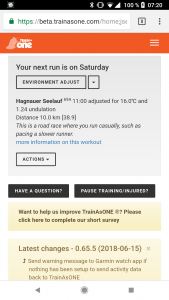
But running casually in a road race is really hard, especially if you don’t have a slower runner, which you know and could pace. So I was letting me carry away with the crowd and ended with a “best effort” run.
My Garmin Forerunner 735XT predicted 48:03 and I managed 49:12.
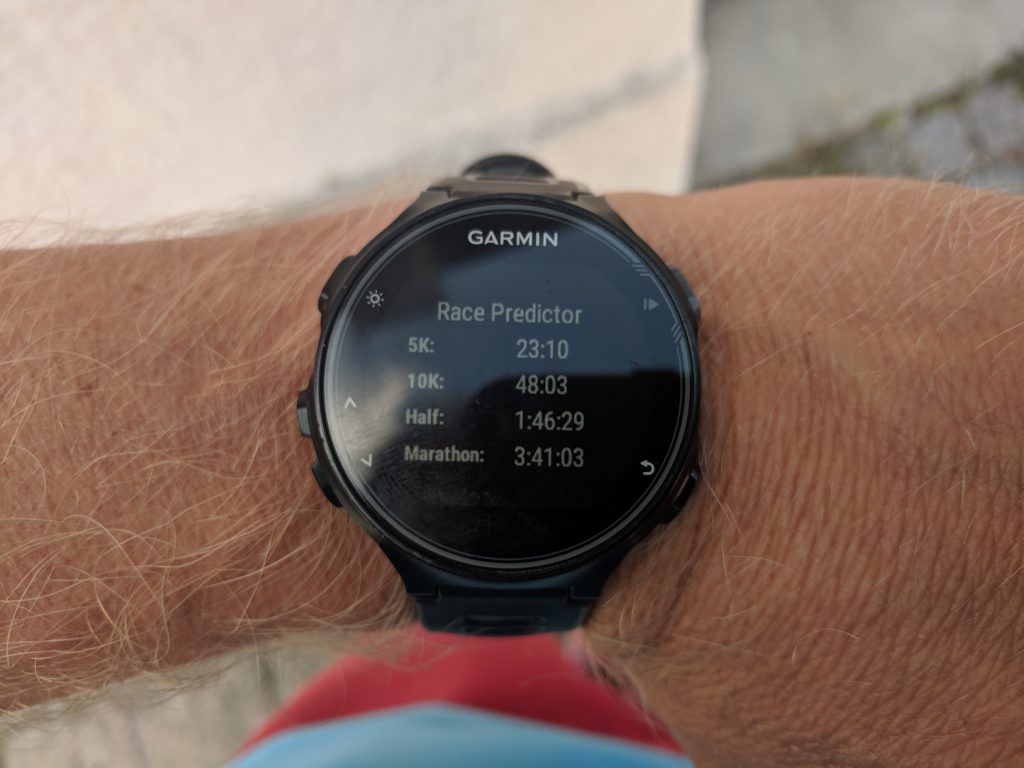
My excuse: The course was not flat.
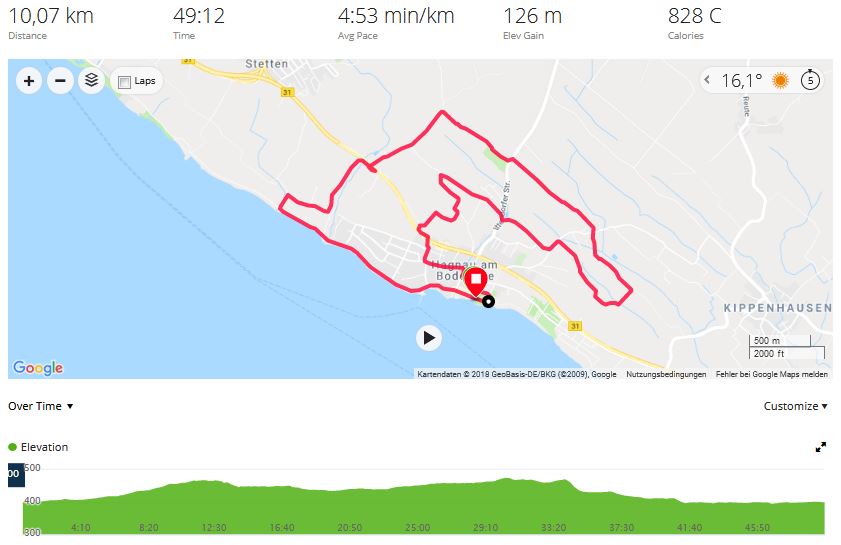
Road Race Analysis
To get the data that you can see below, I used the Garmin HRM-Run (Garmin HRM-Run) chest strap. But what can I do with this data?
Ok Pace is clear. On every incline the pace dropped and downhill I accelerated. At the end was a flat section and pace stayed constant, but I was not able to accelerate for the final sprint.
Heart Rate followed more or less the terrain, but with 178 in average it´s clear that I was running at my limit.
“Performance condition analyzes your pace, heart rate, and heart rate variability to make a real-time assessment of your ability to perform compared to your average fitness level” (Quotation from Garmin Connect help). The performance condition went down from 5 (good 2-10) to 1 (baseline -1, 1). This look normal to me.
Stride length average was 1.23 m (~4 feet) which is too long too short? Together with the running cadence it will be a little bit clearer.
Running cadence average was 166 spm (steps /min) which is quite slow. In the Garmin Connect help section they recommend 180 spm and a fast research on the internet gave me similar numbers. My observation in the race was, that some runners had a really high cadence and very short stride length. It looked funny to me, but they were running fast and smooth. So even if this is only a subjective observation, I will try to shorten my stride length and speed up my legs for a higher cadence.
Vertical ratio average 9.6%. “Vertical ratio is a cost-to-benefit ratio where the cost is the vertical oscillation and the benefit is the distance travelled.” (Quotation from Garmin Connect help). This means, as I understand it, the lower the value the more efficient you run. In my case I make to much vertical movement, which is inefficient, because the energy isn´t used to move forward. So there is another point to improve my running.
Ground contact time balance is nearly 50/50 (50.3% Left, 49.7% Right), which is normal.
In a nutshell
Stride too long, cadence too slow and too much vertical movement. All things which I can improve. But apart from all this technical stuff I had fun racing, observing other runners, enjoying the view and soaking up the atmosphere on a race day.
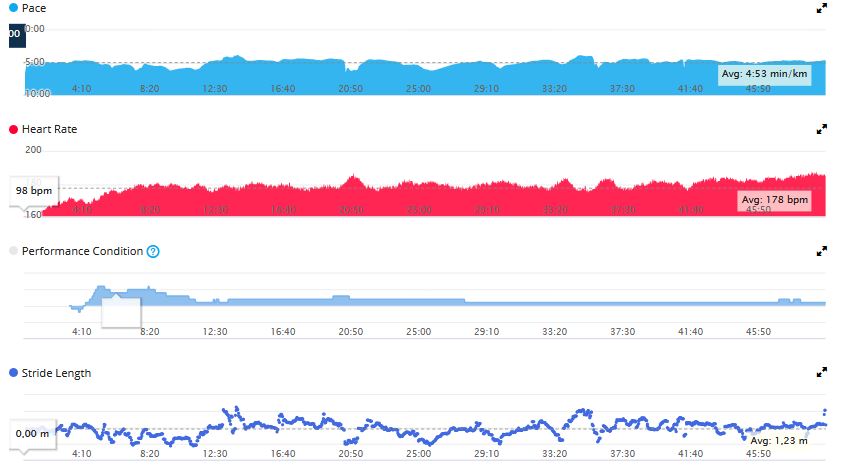
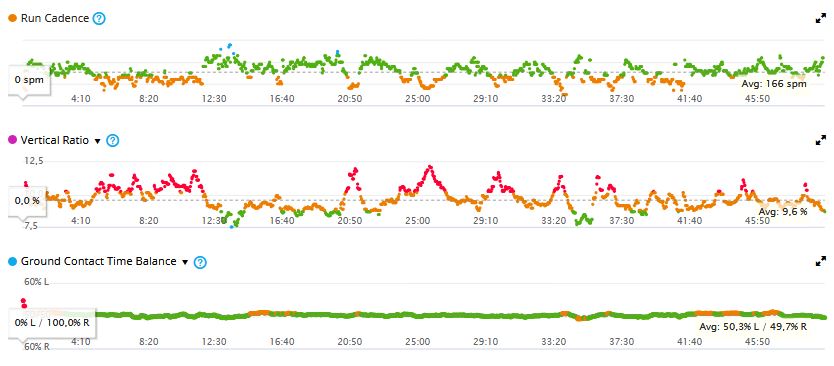
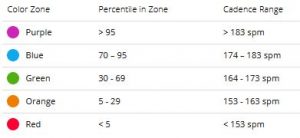
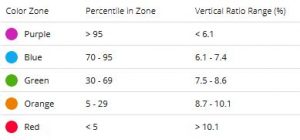
Race Impressions


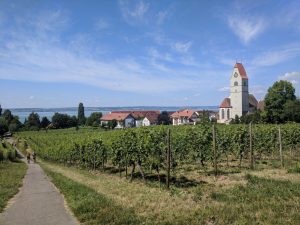

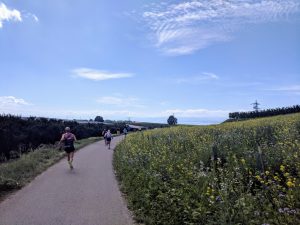
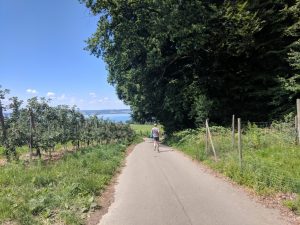
Just to clarify things. I’m not working for any of the above mentioned companies nor do I get any money or any other benefits from them. It’s all my own opinion. If this changes I will state it clearly. Thanks for reading.